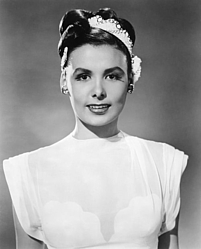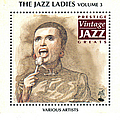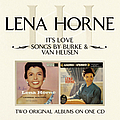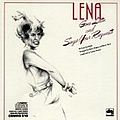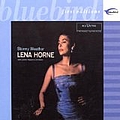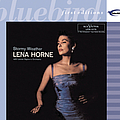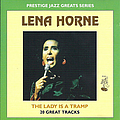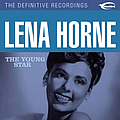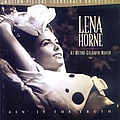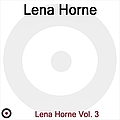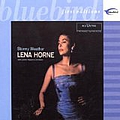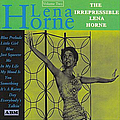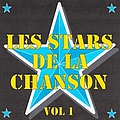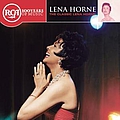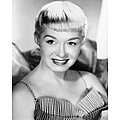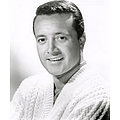Lena Horne Biography
Lena Mary Calhoun Horne (June 30, 1917 – May 9, 2010) was an American singer, actress, civil rights activist and dancer. She was born in Brooklyn, New York. She had recorded and performed extensively, both independently, and with other jazz notables, including Artie Shaw, Teddy Wilson, Billy Strayhorn, Duke Ellington, Charlie Barnet, Benny Carter, and Billy Eckstine. In her biography she stated that on the day she was born, her father was in the midst of a card game trying to get money to pay the hospital costs. Her parents divorced while she was still a toddler. Her mother left later in order to find work as an actress and Lena was left in the care of her grandparents. When she was seven her mother returned and the two traveled around the state, which meant that Lena was enrolled in numerous schools (for a time she also attended schools in Florida, Georgia and Ohio). Later she returned to Brooklyn. She quit school when she was 14 and got her first stage job at 16, dancing and later singing at the famed Cotton Club in Harlem (a renowned theatre in which black performers played before white audiences, immortalized in the film - The Cotton Club (1984)). She was in good hands at the club, especially when people such as Cab Calloway and Duke Ellington took her under their wings and helped her over the rough spots. Before long her talent resulted in her playing before packed houses. If she had never made a film, her music career would have been enough to have ensured her legendary status in the entertainment industry, but films were icing on the cake. After she made an appearances on Broadway, Hollywood came calling. At 21 years of age Lena made her first film, The Duke Is Tops (1938). It would be four more years before she appeared in another, Panama Hattie (1942), playing a singer in a nightclub. By now Lena had signed with MGM but, unfortunately for her, the pictures were shot so that her scenes could be cut out when they were shown in the South, since most theatres in the South refused to show films that portrayed blacks in anything other than subservient roles to whites, and most film studios did not want to take a chance on losing that particular source of revenue. Lena did not want to appear in those kinds of stereotyped roles (and who could blame her?). In 1943 MGM loaned her to 20th Century-Fox to play the role of Selina Rogers in the all-black musical Stormy Weather (1943), which did extremely well at the box-office. Her rendition of the title song became a major hit on the musical charts. In 1943 she appeared in Cabin in the Sky (1943), regarded by many as one of the finest performances of her career. She played Georgia Brown opposite Ethel Waters and Eddie 'Rochester' Anderson in the all-black production. Rumours were rampant that she and Waters just did not get along well, although there was never any mention of the source of the alleged friction. That was not the only feud on that picture, however. Other cast members sniped at one another and it was a wonder the film was made at all. Regardless of the hostilities, the film was released to very good reviews from the ever tough critics. It went a long way in showing the depth of the talent that existed among black performers in Hollywood - especially Lena's. Lena's musical career flourished, but her film career stagnated. Minor roles in films such as Boogie-Woogie Dream (1944), Words and Music (1948) and Mantan Messes Up (1946) did little to advance her film career, due mainly to the ingrained racist attitudes of the time (even at the height of Lena's musical career, she was often denied rooms at the very hotels in which she performed, because they would not let blacks stay there). After Meet Me in Las Vegas (1956), Lena left films to concentrate on music and the stage. She returned in 1969, as Claire Quintana in Death of a Gunfighter (1969). Nine years later she returned to the screen again in the all-black musical The Wiz (1978), where she played Glinda the Good Witch. Although that was her last big-screen appearance, she stayed busy in television, appearing in "A Century of Women" (1994) and That's Entertainment! III (1994). After leaving Hollywood in the1950's, Lena Horne established herself as one of the première nightclub performers of the post-war era. She headlined at clubs and hotels throughout the US, Canada and Europe, including the Sands Hotel in Las Vegas, the Cocoanut Grove in Los Angeles and the Waldorf-Astoria in New York. In 1957, a live album, entitled Lena Horne at the Waldorf-Astoria (At the Waldorf Astoria / At the Sands), became the largest selling record by a female artist in the history of the RCA-Victor label. From the late 1950s through the 1960s, Horne was a staple of TV variety shows, appearing multiple times on Perry Como's Kraft Music Hall, Ed Sullivan, The Dean Martin Show and The Bell Telephone Hour. Other programs included, The Judy Garland Show, The Hollywood Palace and The Andy Williams Show. Besides two television specials for the BBC (later syndicated in the US), Horne starred in her own US television special in 1969, Monsanto Night Presents Lena Horne. In 1970, she co-starred with Harry Belafonte in the hour long "Harry & Lena" for ABC; in 1973, she co-starred with
Top Lena Horne Lyrics
Write a comment
What do you think about Lena Horne? Let us know in the comments below!
Lena Horne Albums
Similar artists
- June ChristyJazz
- Carmen McRaeJazz
- Vic DamoneJazz
- Rosemary ClooneyJazz
- Shirley HornJazz
- Dinah ShoreJazz
- Mel TormeJazz/Pop
- Abbey LincolnBlues/Jazz
- Lionel HamptonJazz
